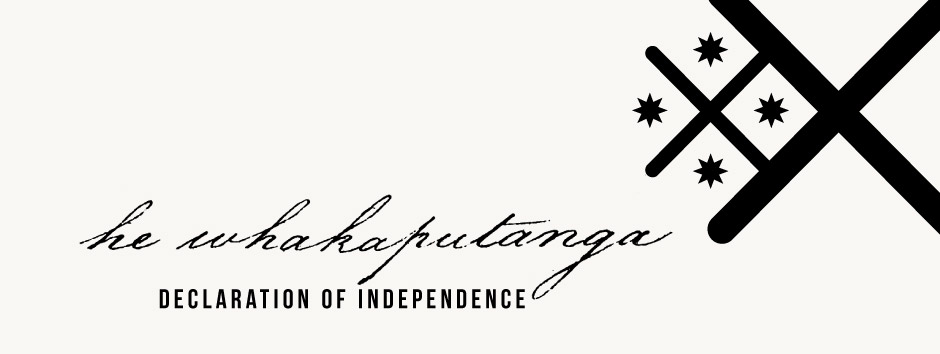Signing details
Te Hiamoe was related to Te Koki, the principal rangatira of the fertile western arm of the Kawakawa River. After Te Koki died in 1829, Te Hiamoe was closely allied to Te Koki’s successor, Tāmati Pukututu, as well as to Te Ruki Kawiti and Pōmare II – all signatories to He Whakaputanga and key members of Ngāpuhi’s southern alliance.
Te Hiamoe’s friendly relationship with missionaries and other European arrivals was noted in the journal entries of Henry Williams, who referred to him as ‘Old Hiamoe’. The Paihia-based missionary first wrote of him in October 1826, after news of a possible conflict was spreading: 'Hiamoe, a relative of Te Koki’s, ran into the room and rubbed his nose against mine, before I was aware of what was coming. He said he was come down from Kawakawa to make peace, and to tell us not to leave; that he was at Taiamai when he heard his pakehas were whati [removing], and he had come directly to take care of them.' [1]
On 21 July 1831 Williams met with Te Hiamoe, Pōmare II and others regarding a dispute over access to water in Pēwhairangi (the Bay of Islands). A year later, Williams was invited by Te Hiamoe and Tāmati Pukututu to attend a hahunga, a ceremonial act that involved disinterring the bones of the dead before moving them to their final resting place. Williams accepted, seeing it as an opportunity to preach to the gathering.
In 1834 Kawiti, Te Hiamoe and a large party of Māori visited Williams at the Paihia mission station, before moving on to the Waitangi home of British Resident James Busby. Here Te Hiamoe took part in a hui to decide the fate of Reti (or Rete), who had been implicated in the April 1834 raid on Busby’s home. 'It was concluded to take Rete’s land at Puketona,' wrote Williams, who thought leaders like Te Hiamoe 'appeared happy at the prospect of settling the affair in so quiet a manner.' [2]
Te Hiamoe’s relationship with Busby and Williams continued with the signing of He Whakaputanga on 28 October 1835, alongside his close ally, Tāmati Pukututu.
[1] Hugh Carleton, The Life of Henry Williams, Archdeacon of Waimate, Upton, Auckland, 1874, vol.1, p.47.
[2] Ibid., p.160.


Community contributions